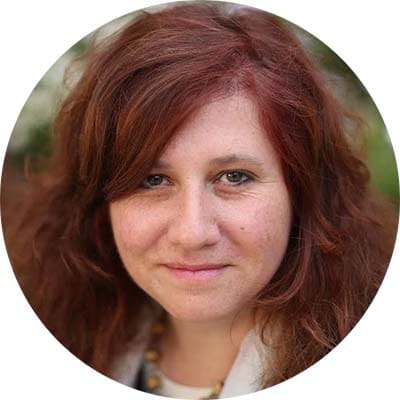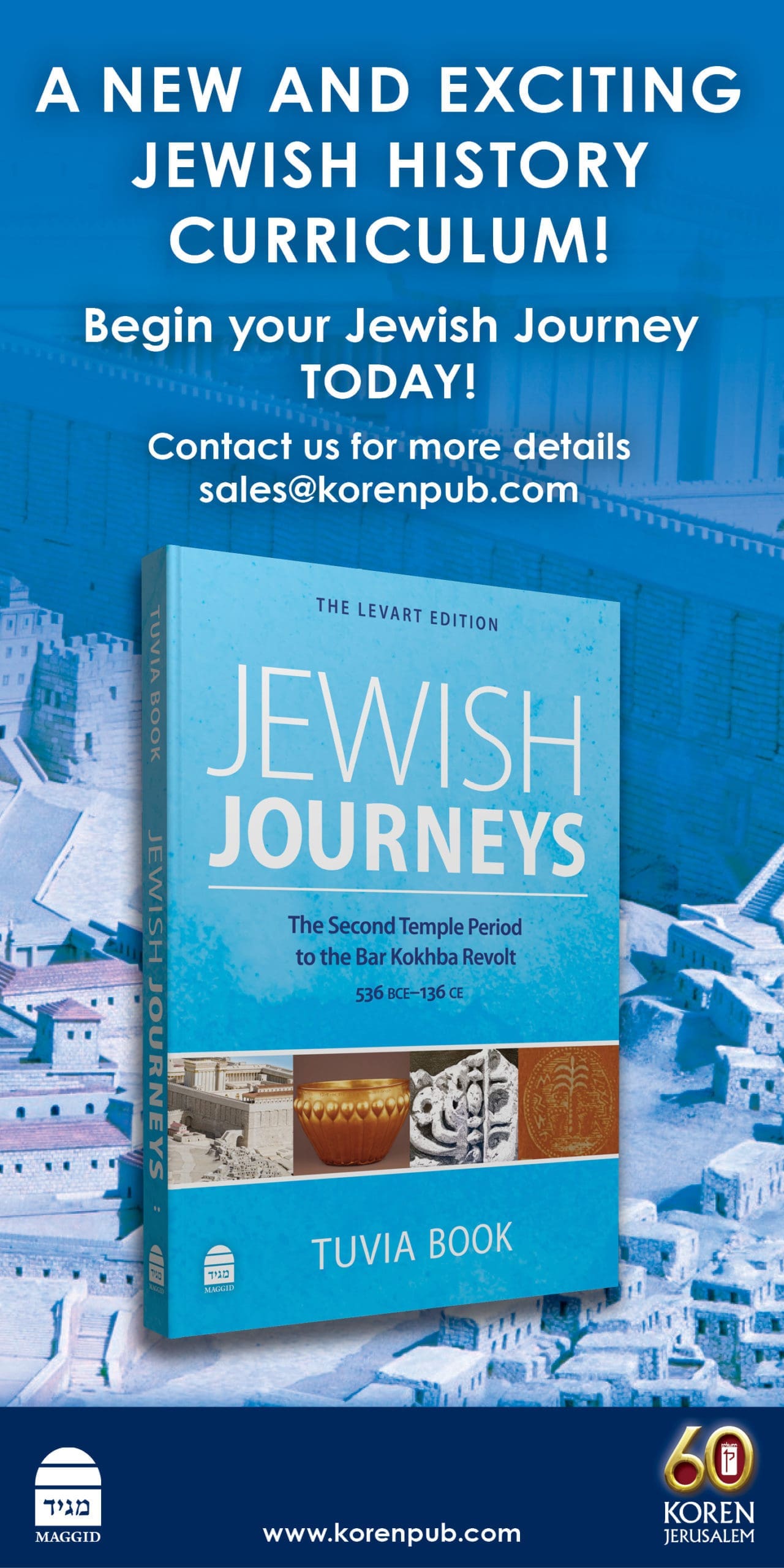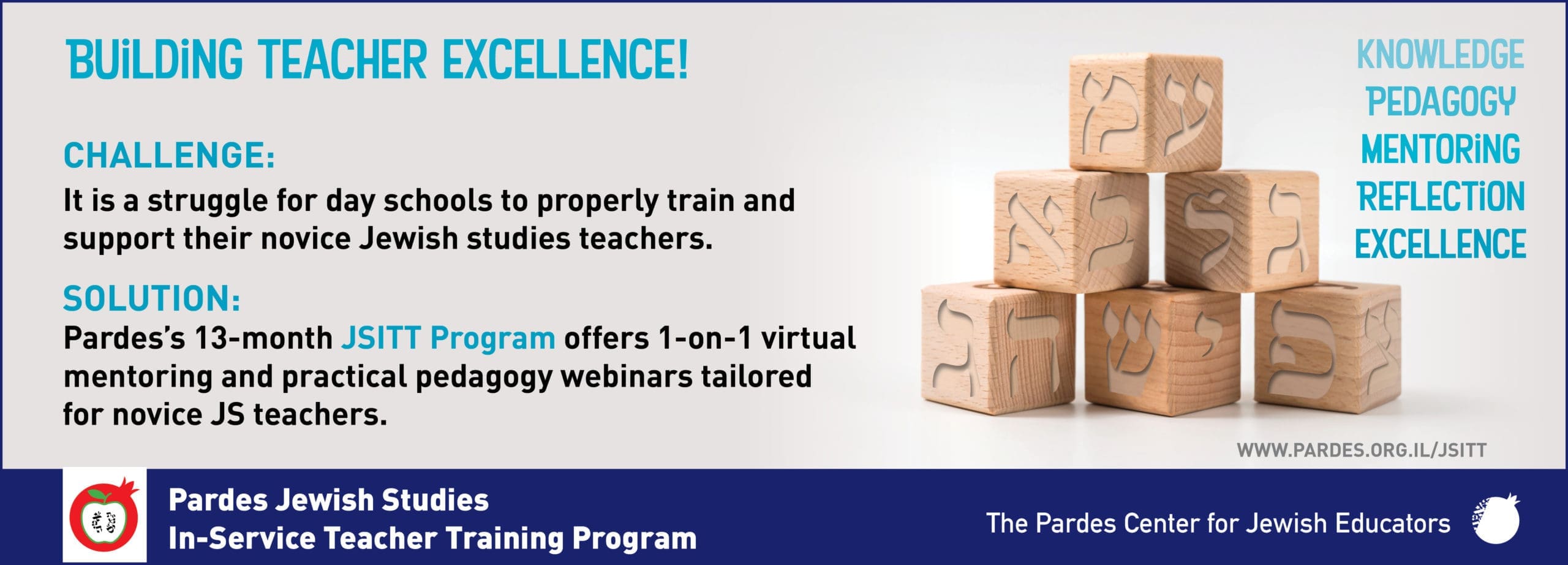Introduction
This article, an expansion of one I previously published in Jewish Educational Leadership, focuses on what I consider to be a superb technique: Bibliodrama. Since I began using it in 2001, I have run over 500 workshops worldwide, in all kinds of frameworks, and to diverse groups; and I continue to be blown away by the power and versatility of a technique that is ultimately very simple. And although most of the groups I work with are adult groups, I have found it highly effective with school-age individuals as well and have trained teachers who have embraced the technique with enthusiasm for their own classrooms.
Bibliodrama is not acting, per se. Its creator, Dr. Peter Pitzele (whose book, Scripture Windows, is designed to train the reader to use the method) imported methods from the world of psychodrama into the study of Tanakh, and honed them into an art form. In Bibliodrama, a transition is effected by moving from studying the texts from the outside, using the analytical and academic left brain, to studying them from the inside, in creative and imaginative right-brain mode—and thus, getting right into the kishkes of the stories we are teaching. Questions, ones with no obvious answer, are posed to the students who respond in first-person language, speaking as the biblical characters or even as objects.
Sample
Here’s a sample snippet from a Bibliodrama session focusing on Moses’ encounter at the burning bush. Note that the question can elicit a number of possible answers, none of which are necessarily right or wrong. Also, note the demand for a response in the first person. These are the two fundamentals of Bibliodrama:
Facilitator: So, Moses, you’ve turned off the path and are now staring at a bush that is burning yet not being consumed. What are you thinking or feeling at this moment?
Person A: Curiosity keeps me rooted to the spot. I’ve never been so puzzled in my life.
Person B: And I feel humbled. Normally, I can explain why things happen, but now I am stumped.
Person C: This bush feels like a metaphor for my own life: it is me. By rights I should have died many times—floating in the reeds as a baby, by Pharaoh’s hand, wandering in Midian—yet here I am. I am moved.
Person D: I’m not thinking anything; I’m simply in awe.
Let’s unpack what we learn from this snippet. First, you can deduce that Bibliodrama is not acting. For the most part, the students remain seated. Frequently, as is the case here, the entire group is role-playing a single character, building off each other to shape and deepen it.
The answers above are, as you may have guessed, given by adults. Children’s responses would not be quite so sophisticated, but they often have their own depth. I have been impressed by the insight and innovation exhibited by children in their answers, which are sometimes more profound than those of adults. The method does work well with both populations, who bring different strengths and weaknesses to the technique. It should be noted that teenagers sometimes do not connect as well, due to self-consciousness.
As we can see from the sample, the multi-voice conversation is very rich and is crucial to the process. Person B bounces off Person A, while the ideas of Persons C and D, though different, may have crystallized upon hearing the formulations of the first two. Every voice is significant, as this is “Torah 2.0”—it is user-generated. If people remain silent, the page we want to write together will remain blank.
In my introduction to a Bibliodrama session, I clarify that all answers are legitimate insofar as they stay within the boundaries of the text. Opening the boundaries in this way might feel a little challenging to the teacher. As a facilitator, I have often been surprised by answers, offering perspectives and insights I would never have thought of myself. That is something that teachers must be prepared for; they need to come in with an open mind and be prepared to hear things from various surprising angles, and not react in ways that are judgmental or will discourage others from feeling safe enough to share openly and with confidence. The teacher/facilitator must be prepared to be flexible in receiving unusual answers, and yet at the same time be firm when the boundaries are crossed. What constitutes a crossing of the boundaries is up to each teacher to decide.
Effect on Students
Not for nothing is the technique sometimes referred to as “contemporary Midrash.” Bibliodrama transforms unknowledgeable students into sensitive Bible commentators, assiduously searching the text for clues to solve puzzles and difficulties, after their curiosity has been aroused by thought-provoking questions such as, “Cain, what did you say to Abel before you murdered him?” or “Jacob, what are your thoughts as you leave your family in Be`er Sheva for Haran?” As the participants speak out, a previously inaccessible ancient text truly becomes a living tree.
The simple transition from third-person language, speaking about the text, to first-person language, speaking from within the text, makes a world of difference. Students begin to draw upon their emotions, experiences, and intuitions, often astonishing themselves with the powerful insights arising from the encounter between themselves and the narrative. Even people with very weak biblical backgrounds—perhaps especially such people, since a strong education in the “correct” way to read Bible often obstructs the flow of Bibliodrama—open their mouths, and incredible ideas simply flow. This makes the session a joy for the facilitator too, another incidental benefit of the approach. While I personally get bored fairly easily, I can happily do the same Bibliodrama over and over again as each exploration, with a different group of participants, is new.
Further, in a Bibliodrama, certain children who do not shine in the regular left-brain classroom atmosphere will come into their own. This is especially true for those with creative imaginations, normally deprived of the opportunity to fully display them. In general, both children and adults tremendously enjoy the group experience of building up the inner life of a story, and they relish the opportunity both to be playful and also to express deeply personal feelings through the safe mask of the biblical characters. (Note: Bibliodrama may verge on the therapeutic and can reveal information that could be useful for a trained therapist.)
The experience also changes the participants’ relationship to text. Groups of students were found in the next day’s lesson to refer constantly to the insights gained in a Bibliodrama the day before; and I have witnessed an eighteen-year-old product of a religious Jewish education, announce, “I never before thought of Abraham as someone I could actually identify with!”
Use By Educators
Two more points are pertinent to educators. First, a Bibliodramatic experience constitutes an excellent companion to the study of Tanakh with commentaries. After having dealt with the textual difficulties by role-playing them out, students possess far greater clarity regarding the matters the commentators struggle with. (The technique is not limited to Tanakh—it may be applied with stories from Talmud, Midrash, literature, or even history, whether Jewish or not.)
Second, and very conveniently for educators, Bibliodrama may be easily integrated into a regular class. Although a full Bibliodrama can last for an hour or more, a teacher may also, in the course of a class, suddenly switch into a Bibliodrama moment lasting five or ten minutes, casually saying, “Now, everyone, I want you to imagine that you are Abraham, after you have been commanded to take your son Isaac and offer him up. Are you going to say anything to Sarah—and if so, what?” We can also diversify the methods, for example splitting the room into two and having one half speak as Abraham to the other half who are speaking as Sarah. Another great method is asking students to vote. “Who feels, as Abraham, that you will tell Sarah the truth—hands up? And who feels you will not tell her the whole truth, but will partially lie or hide it from her?” This voting technique is extremely useful in keeping the entire class engaged as the character. You can then call on someone and ask them to elaborate on why they voted as they did.
On Zoom
Before closing, I’d like to share some tips that arose when, due to COVID-19, I began to do Bibliodrama on Zoom. I commenced a weekly class beginning with Parashat Bereishit in 2020, something I had never done before. I found that the method works well online, though it is best with small groups of four to eight people.
As well as having participants speak in turn as one character, I ask for emotions to be written in the chat. Further, the aforementioned voting technique is a great way to keep everyone engaged even as one person at a time takes the mic. My adult Zoom participants were able to stay focused and engaged during the course of 90 minutes, as we moved through sections of a story or a biography of a specific character. This format, generated by the exigencies of the coronavirus, has impacted lives very positively. “The best Torah I ever learned,” reported one regular after completing a year’s cycle, while another learned through all of the parashot for the first time in her life and made a siyum. Zoom Bibliodrama for children yielded similar results. Teachers needing to handle an entire class on zoom could certainly utilize these techniques to keep them engaged and excited, deepening their experience and stimulating multiple intelligences.
To conclude: Bibliodrama is a powerful tool to deepen learning, engage a broad range of students, and change up the classroom routine. It can be used with an extraordinary range of ages, backgrounds, and abilities, and helps to “level the playing field” in the classroom. When necessary, it is portable to the online learning environment. And it can help reinvigorate teachers with new insights into the texts they study and the students with whom they share a learning experience.

Reach 10,000 Jewish educational professionals. Advertise in the upcoming issue of Jewish Educational Leadership.





